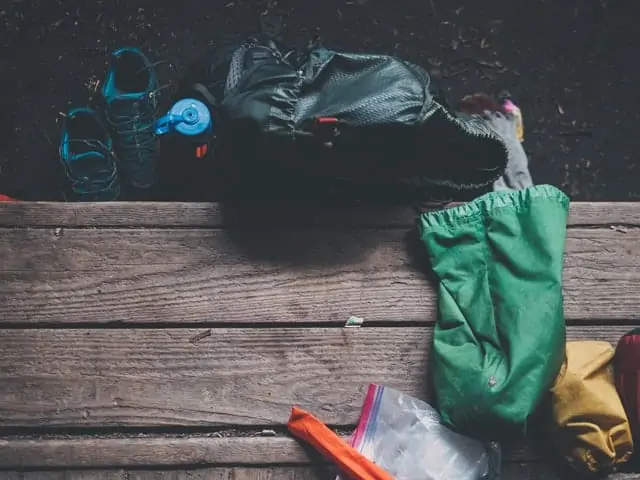Outdoor gear is an important investment for any avid or casual hiker. Being able to stay cool and dry while out and about will make your experiences that much better!
Waterproofing your Columbia jacket can also make it more versatile, comfortable, and last longer.
Follow these six simple steps to waterproof your favorite Columbia jacket!
Steps For Waterproofing A Columbia Jacket
1. Wash Your Columbia Jacket
Your jacket most likely has got some use which means it has dirt, oils, and other stuff on it. There is a misconception in the gear world that you shouldn’t wash a waterproof jacket. In fact, it helps clear out the fabric fibers and lets the jacket breathe better.
Whether your jacket is new or has been on a few adventures, the first step is to get it clean. You will want to wash your jacket with a cleaning cloth or in the washing machine, paying special attention to not using too much detergent. Either way, it’s important to follow the care instructions for your Columbia jacket.
2. Fully Dry the Jacket
Dry it according to the care instructions, some jackets can be put on low to medium heat in the dryer. You can also let it air dry. It is important to note that the heat from a dryer activates a lot of the chemicals in waterproofing.
If you happen to be re-waterproofing you may find that a wash and dry might be enough to bring the water-resistant properties of the jacket back to life!
3. Apply Durable Water-Repellent Coating (DWR)
You should choose either a spray-on or wash-in style to apply to your now dry jacket. There are many quality DWR products that are available online or at outdoor stores. You will want to follow the directions for your specific product because the application can vary from manufacturer to manufacturer.
When choosing between spray-on DWR products and wash-in products, keep in mind the materials you are applying this to. A nylon Columbia jacket probably works best with a spray-on and a fleece Columbia jacket probably works best with a wash-in product. Also keep in mind that whichever product you choose, you may be able to use it on your other Columbia gear.
Pay special attention to the seams or places like where a backpack lies to make sure the DWR gets there. Make sure that you close the pockets and zip up any zippers before applying the DWR. If you happen to be re-waterproofing, you can decide to spot treat certain areas if that is all that is necessary.
4. Let the DWR on the Jacket Dry Out
This step is especially important in ensuring more longevity out of any waterproofing process. The DWR chemical needs to be fully dried in order to work the best.
Depending on what the care instructions say, you may also be able to tumble dry your jacket for this step. Keep in mind that heat activates a lot of the waterproofing chemicals.
5. Check for Missed Spots
Now that you’ve let everything dry, you will want to check the entire jacket, paying close attention to the seams, for places you missed during the application process. It is possible that certain high contact areas like elbows, backpack spots, or near the face will need a second coat of DWR.
If you missed any spots or want to reapply those high contact areas, repeat the above sets and make sure to give the new spots ample time to dry.
6. Test The Waterproof Material
Now that you’re pretty sure you didn’t miss any spots on your Columbia jacket, you will want to test the new waterproofing. This step could be as simple as getting a cup of water or a hose and putting water on the jacket.
How will you know if it is working? If the water beads up and rolls off your now waterproofed Columbia jacket, then you are set to go!
Tips for Waterproofing Your Jacket
These easy steps will get you there, but there are some things to note regarding waterproofing. Waterproof clothes have a membrane on them that allows them to stop the passage of water. Waterproofing non-waterproof fabric won’t really make them fully waterproof. Also, there is a difference between waterproof and water repellent.
Waterproofing doesn’t make the jacket any less breathable.
This waterproofing DWR process not only tightens fibers and keeps your jacket in shape, but also blocks some UV light from reaching the fabric fibers. All of this combined care can extend the life of your jacket.
How often you may need to reapply waterproofing techniques depends on how often you use your gear; if it stops beading water then it may be time. Now you are ready for your adventures in your waterproof Columbia jacket!
How Long Does DWR Last?
If you’ve applied DWR to your outdoor jacket or gear, you can expect it to help with water resistance for 3-6 months. The more often you use the jacket out in the rain, the less time it will stay waterproof.
After the 6 months is up, or the jacket begins to show signs of breaking down, you can follow the same process and re-apply the resistant properties.
Final Thoughts
Turning your Columbia jacket into a waterproof jacket only takes a few ingredients and a few easy steps. Follow the guide above to know exactly how to apply the waterproof material!
If your Columbia jacket was previously waterproof but doesn’t work as well anymore, you can reproof the jacket with the same steps as above.



